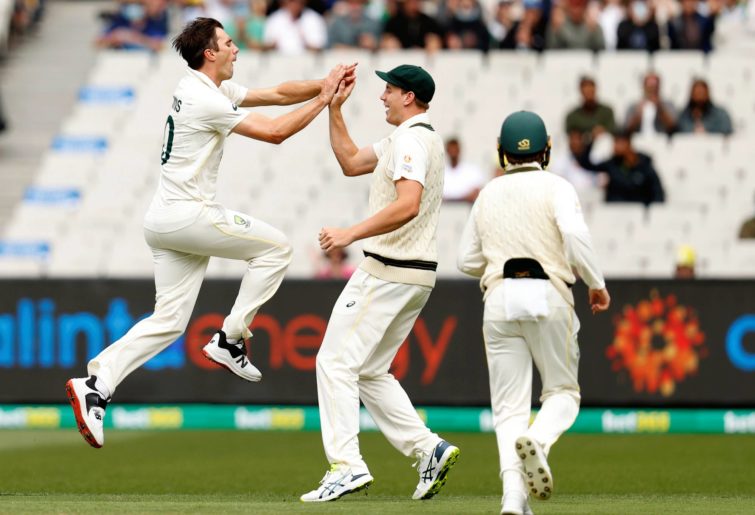The possibiliy of Jofra Archer's career coming to an early end will rob cricket of a bowler with so much talent
While a premature retirement isn’t the solution, he or England want, he may be forced into it if he can’t maintain a long run of matches.
Opinion
“The horse is here to stay,” the president of the Michigan Savings Bank told Henry Ford’s lawyer in 1903, “but the automobile is only a novelty – a fad.”
The banker must have been convinced that most innovation schemes fail. However, Horace Rackham, the lawyer, took his chances and bought 50 Ford shares anyway. In hindsight, all successful innovations appear inevitable, and we all would like to believe, had we been in that situation, we would be Rackham and not the banker.
Of course, it is hard to predict the future and when T20 cricket appeared on the global stage as an innovation scheme, it was hard to know whether it would be a success or not.
When Adam Hollioake of Surrey won the toss of the inaugural T20 game he chose to bowl. When asked about his decision, he said: “I haven’t got a clue what’s going to happen so we may as well send them into the cauldron first.”
Two decades on, T20 cricket has revolutionised the world of modern-day cricket. Its impact has vaulted past what even the most ardent optimists thought possible. The International Cricket Council noted T20’s growing popularity and staged a 2007 T20 World Cup in South Africa that saw India beat rivals Pakistan in a tense final encounter.
Just as India’s victory in the 1983 ODI World Cup had altered the attitude of crickets most populous nation towards the limited-overs game, their success in the inaugural T20 World Cup was equally transformative. They consolidated their position as the game’s economic powerhouse.
This success and growing popularity were pounced upon by the Board of Cricket Control India (BCCI), who launched the Indian Premier League (IPL) in 2008. The new six-week tournament changed the global environment of cricket.
The city-based IPL teams were taken over by wealthy billionaires. Teams acquired players by bidding bucketloads of money for an individual in the auction. This meant leading cricketers could earn more money from a short stint in the IPL than playing a full year of cricket for their country.
A professional sport only draws revenue when it attracts more fans – whether that means selling more tickets, growing television audiences or from lucrative sponsorship deals. In the first season of the IPL the average attendance was 58,000 per match. Compare that to the average Test cricket attendance of 30,000.
It was becoming clear to cricket boards around the world that this new format was taking the world by storm and generating the most revenue.
The proliferation of professional T20 leagues around the world attests to the fact that this is a means of creating mass amounts of revenue. Every major cricketing country except New Zealand now have their own domestic T20 competition that is staged annually.

(Photo Getty Images)
The quest for wealth and power overcame the global cricket boards who started to cut out Test and ODI cricket from the international calendar for T20 competitions. Power, at its roots, is the ability to effect change on the environment and the BCCI had achieved exactly that by starting the IPL and changing the world of cricket in the process.
International boards began to stop scheduling cricket during the time of the IPL. The boards were afraid of players choosing the lucrative salaries of the IPL over the honour of playing for their country. However, instead of all global cricket boards agreeing to stage their respective T20 leagues concurrently to enable other formats to be played at other times, boards resorted to staging their T20 leagues at contrasting times.
This has now disrupted the system that was in place and means less and less ‘traditional cricket’ being played. Greg Barclay, the chair of the ICC, stated: “There could be a massive reduction in the amount of Test cricket being played in the next 10 years because of the growing popularity of T20 cricket and the revenue that form of the game is creating.”
Test cricket is and always should be the greatest and most respected form of cricket for it symbolises the purity of cricket in and of itself. It encapsulates tradition. It puts players through a toiling battle, testing their mental strength, talent and fighting spirit to the very extreme.
It is a test of character. A test of camaraderie and of mateship. Virat Kohli said: “Test cricket is real cricket. I want it to stay alive, without it the infrastructure of cricket will collapse.”
Test cricket is vital to the game, and we need to schedule enough games in a calendar year that will inspire the next generation.

(Photo by Darrian Traynor – CA/Cricket Australia via Getty Images)
Barclay believes that T20 cricket is the future. Many believe it is inevitable that it is going to consume much of the cricketing calendar. T20 competitions are popping up all over the place, drawing cricketers away from ODI and Test cricket.
To balance cricket’s schedule and create a more meaningful 20-over competition whilst still maintaining big-name Test and one-day players, cricket needs to start T20 league cricket – similar to that of the football system in Europe. This would enable T20s to be played, allowing cricket boards to receive revenue and the time and space in the calendar for Test cricket and ODI cricket to be staged.
Take the European football system, for example. Each country has their own domestic league, which consists of teams from different cities around the country. They all play each other twice in a league system that incorporates a ladder. There are different divisions and the teams who place inside the bottom three of the league are relegated to the lower division.
In the lower divisions, if teams place in the top three, they are promoted to a higher division. Furthermore, if you are in the highest division in the domestic structure and place inside the top four you qualify for the Champions League where other teams from other countries compete, and the winner is the champion of Europe.
This structure could be implemented in the cricketing world. An Australian domestic T20 league (like the BBL) although in a pyramid structure where there are several divisions and teams can be relegated and promoted. Each team is made up of local players, and international players must play for a team in their country.
In addition, all global T20 leagues need to be concurrent. Coordination is required. This ensures players are not drawn away from their country because of monetary incentives. The top four teams in Australia can then enter a new global competition in which they play against the top teams from India, Pakistan, West Indies, UK, New Zealand, South Africa, Sri Lanka, and Bangladesh.
These T20 leagues can operate for 4-5 months of the year and then the other months of the year can be dedicated to Test cricket and limited-overs cricket.
For more than 50 years, international cricket has been trying to supplement the finances of ‘traditional’ cricket. The one-day game had some success in attracting crowds, but the new short format represents the greatest opportunity to create a domestic league competition, modelled on the European football system. It may also be the means to finding greater acceptance in other countries where other sports dominate.
The domestic league structure will provide more revenue and leave time for other formats in the game which continue to be overlooked.
To many, this may look like radical innovation. Yet that is the essence of innovation itself which, by its nature, must contend with resistance, doubt and pessimism – all native to the territory. Henry Ford and countless others have done so.
Radical or not, this will be an innovation that strengthens and animates the very roots of the great game we call cricket.